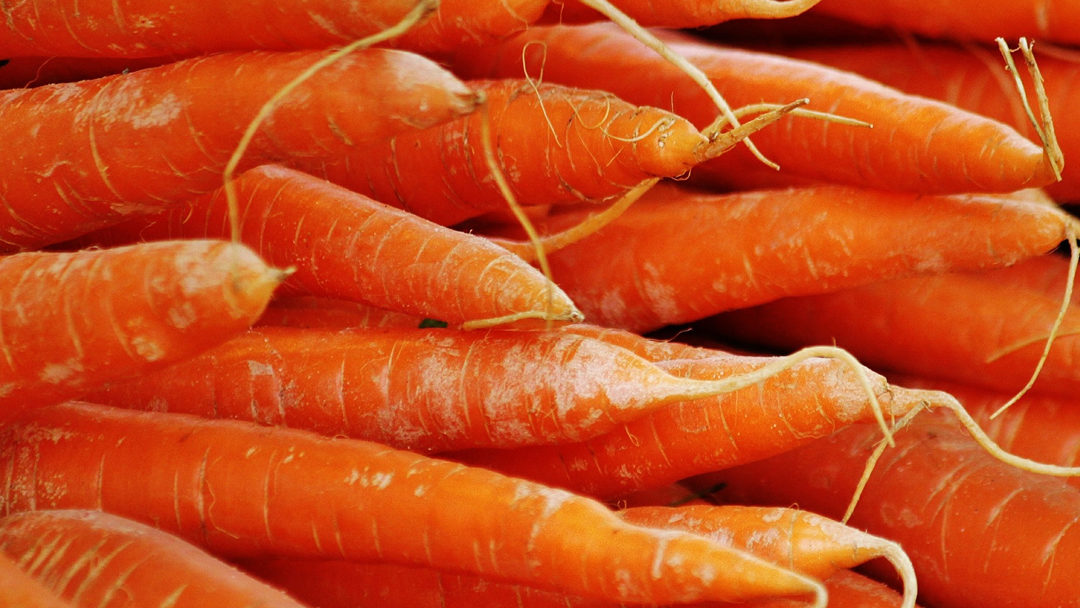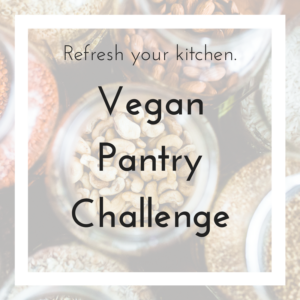Ask anyone to draw a vegetable and chances are they’ll draw a carrot. North Americans consume many fewer carrots (under 10 pounds per year) than potatoes (almost 50 pounds per year, most of that as French fries, and including 5 pounds of potato chips). But, aside from lettuce, it’s safe to assume that it’s the veggie that is most likely to be eaten raw. (The USDA classifies tomatoes as the second-most eaten vegetable but… it’s a fruit.)
I am not absolutely sure why the humble carrot became so popular. I would guess that it’s due to its convenient shape and size (great for a snack; easy to adjust number of portions by adding more carrots). We are also able to store them through the winter without drastically impacting their value (unlike more fragile vegetables like greens and bell peppers). We should be thankful to the generations of ancient Persian farmers who stubbornly bred today’s domestic carrots from their wild ancestors in order to reduce bitterness, increase sweetness, and make their texture appealing.
At this time of year, you will find fabulous, fresh, sweet carrots at your farmers’ market. Grab a couple of bunches and keep the tops! Eat a few raw ones on the way home as you ponder their top nutritional benefits: a strong dose of beta-carotene that your amazing body will turn into vitamin A. (Vitamin A is key for cell differentiation and in particular for eye health.) Then cook the rest with a smidgen of oil to maximize carotenoid absorption by as much as 600 percent.
(Fun fact: left to their own devices, carrots will grow into beautiful flowers… but do not confuse them with the pretty but dangerous giant hogweed, a member of the same botanical family.)
Cooking with the star
My favorite way to eat raw carrots is as coleslaw. I simply grate as many carrots as I can and mix with a finely chopped head of green or purple cabbage. If you have a food processor, it’s a very reasonable way to use it but with good knife skills it will be faster to do it by hand. Then add in a couple of handfuls of raisins or dried currants. Got an apple? Dice it and throw it in for extra juiciness. For a dressing, a few tablespoons of apple cider vinegar, two teaspoons of maple syrup, half a teaspoon of salt and some pepper will do the trick. You can always add vegan mayonnaise if you prefer a creamy version. Mix well and chill for half an hour or more. Yum!
That coleslaw will be an amazing side dish for… your carrot dogs! Yes! I am embarrassed to report that I have not tried this myself yet, primarily because we do not own a grill. I promise I will make them at the cabin this August. This recipe is the one I most often see recommended online. Give it a shot!
If it’s not too hot and you don’t mind firing up the oven, this great couscous salad will be a hit in your home. It’s easy to decompose into finger foods for the little ones. We use Kalamata olives instead of green. If you prefer to skip the oil in the dressing recipe, it’s fine because the oil from the olives will carry the carotenoids nicely.
Looking for a sandwich filling? Try this carrot-walnut pâté.
Carrot muffin? Right this way. Sweeter maybe? Try this cupcake.
I hope you didn’t toss those carrot tops. Hellloooo, chlorophyll! The leaves have to be super fresh, without dried bits. Blanch them for 1 minute in boiling water then toss them into your next batch of pesto with some basil or cilantro. YUM!
Organic or not? To peel or not to peel? What about “baby” carrots?
As usual, there is no clear indication that organic carrots are healthier than non-organic ones. This being said, there must be something in the way that organic carrots are grown, stored and packaged that explains that they often look better and taste sweeter. What is your experience? In any case, I personally choose local over certified organics – if only because they come with the freshest carrot tops.
I energetically brush my carrots to make sure they do not have residual dirt. When eating winter carrots (those that are bigger and have been stored longer), I often peel off the outer, tough layer. Young carrots don’t need peeling in my experience.
What about the tiny carrot fingers you can find in a bag at the grocery store? Just so you know, they are regular carrots that have been cut in two and peeled to make them more convenient as a grab-and-go snack. Since they are peeled, they also have to be rinsed with chlorinated water to prevent bacteria growth. Not particularly attractive when you think of it, but based on my research that seems to be a common practice for all commercially-distributed carrots (including organic ones). Grabbing a bag of baby-cut carrots is certainly a better idea than eating a bag of potato chips, especially if you use them as an opportunity to finish off a tub of hummus. Remember that, regardless of organic status and marketing ploys, more vegetables is always better than less vegetables.
What is your favorite way to eat carrots?



